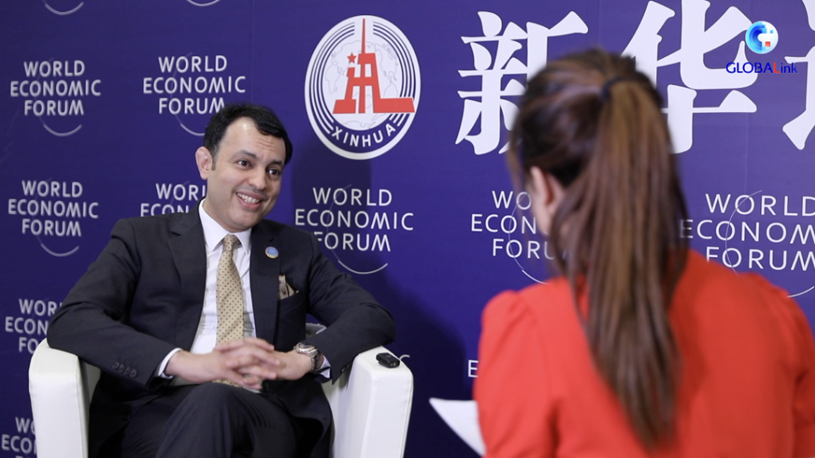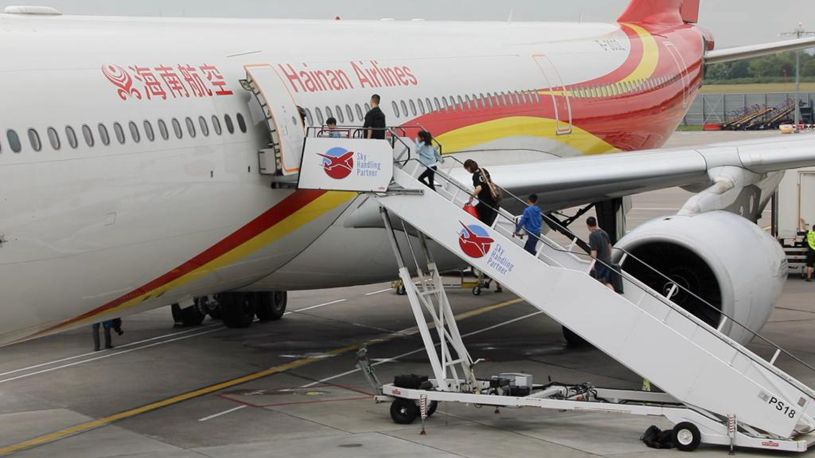
A woman sells artistic items at an informal art and craft market in Windhoek, Namibia, on June 27, 2023. (Photo by Ndalimpinga Iita/Xinhua)
The display of colorful artistic items adorned the floor and stalls at a bustling informal market in downtown Windhoek, Namibia's capital, where Jossy Haikali, an artist, was selling items.
WINDHOEK, June 29 (Xinhua) -- The display of colorful artistic items adorned the floor and stalls at a bustling informal market in downtown Windhoek, Namibia's capital, where Jossy Haikali, an artist, was selling items.
Haikali is part of longstanding trade by artists, maximizing tourism, one of the pillar industries for Namibia's economy, to generate income. The items sold include beadwork, pottery, and cultural and embroidered items.
Haikali said on Tuesday that selling artistic items has allowed her to sustain her livelihood.
"I turned to art when I came to the city; it is now my lifeline. My children have gone to school, and on it I still rely," said Haikali, who has been selling craft and artistic items at the art market since 1995.
According to her, the small-sized items sold offered a competitive advantage, which tourists find easy to carry.
"They take a bit of Namibia with them while we promote our culture and earn the required funds," added the 53-year-old.
She is not the only one. Paulina Ashikoto migrated to Windhoek from a village in Oshikoto Region and started selling art items in 2020.
"It was just before the outbreak of the COVID-19 pandemic, and business took a knock. I returned at the end of 2021 when international traveling resumed," Ashikoto said.

A woman displays an artistic item at an informal art and craft market in Windhoek, Namibia, on June 27, 2023. (Photo by Ndalimpinga Iita/Xinhua)
Namibia recorded an increase in tourist arrivals in 2023, seen as a sign of recovery of the tourism industry from the pandemic, according to a report released in May by investment research firm, Simonis Storm Securities.
The 2021 Tourism Arrival Statistics report also shows that tourist arrivals into Namibia increased from 169,565 in 2020 to 232,756 in 2021, representing a 37.3 percent growth.
"Since the return of travelers, things are looking up because many locals don't buy from us," Ashikoto said.
Selling the crafts has offered more than an income for the traders. According to Haikali, craft selling is an empowering and meaningful part of invested artists' lives.
"We come from an era where women stayed home. Now we can do more with our skills and thrive. And art offered us that. This offered me economic freedom as well," she said.
For Ellen Tjivinda, selling art allowed her to showcase the culture of the Ovahimba people, one of the indigenous tribes from northwestern Namibia. These include cultural attires and dance.
"I then send money to my family in Kunene Region to survive threats of climate change that negatively impact our nomadic lives. But I also learned how to run a business from here, a skill I did not possess," Tjivinda said.

People visit an informal art and craft market in Windhoek, Namibia, on June 27, 2023. (Photo by Ndalimpinga Iita/Xinhua)
Despite the challenges of the daily slog of bargaining and competition that thwarts business, the self-made artists hope to ride high on a wave of success backed by entrepreneurial dedication. The artists often collaborate and share best practices and the skill sets necessary for craft-making that help ensure success.
In the interim, the artists continuously experiment with new designs and market products on social media to diversify reach and clientele.
"Even here on the street, we observe what others are doing. I learned most of what I know here at this market," Haikali said. ■












